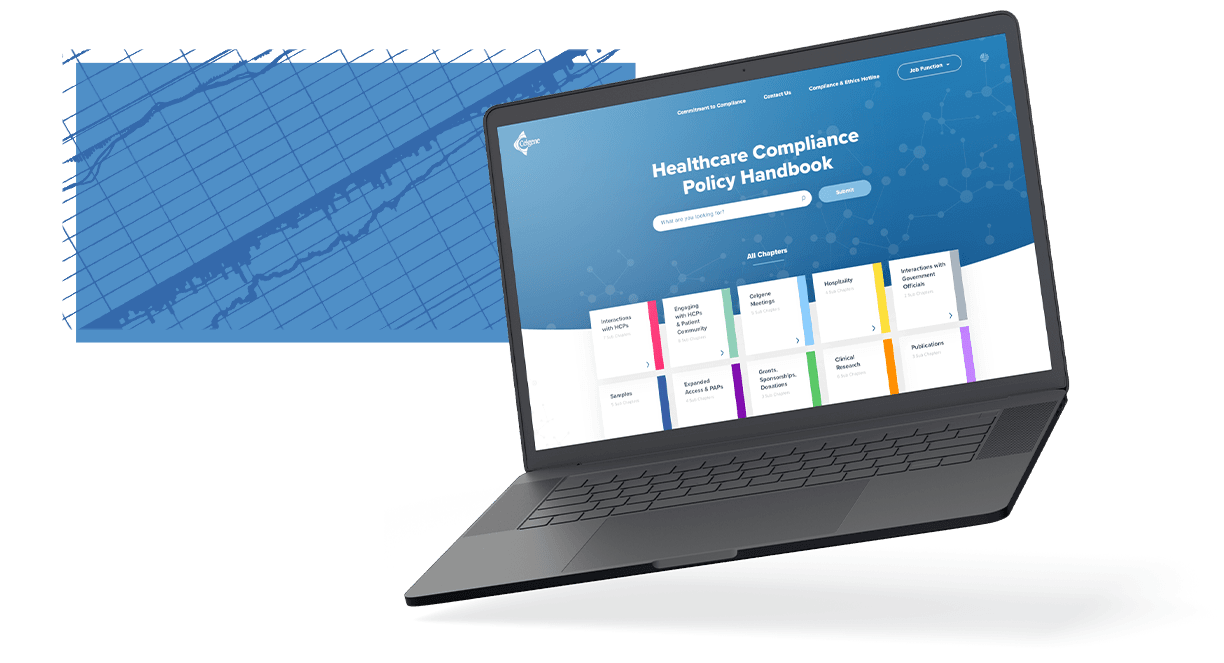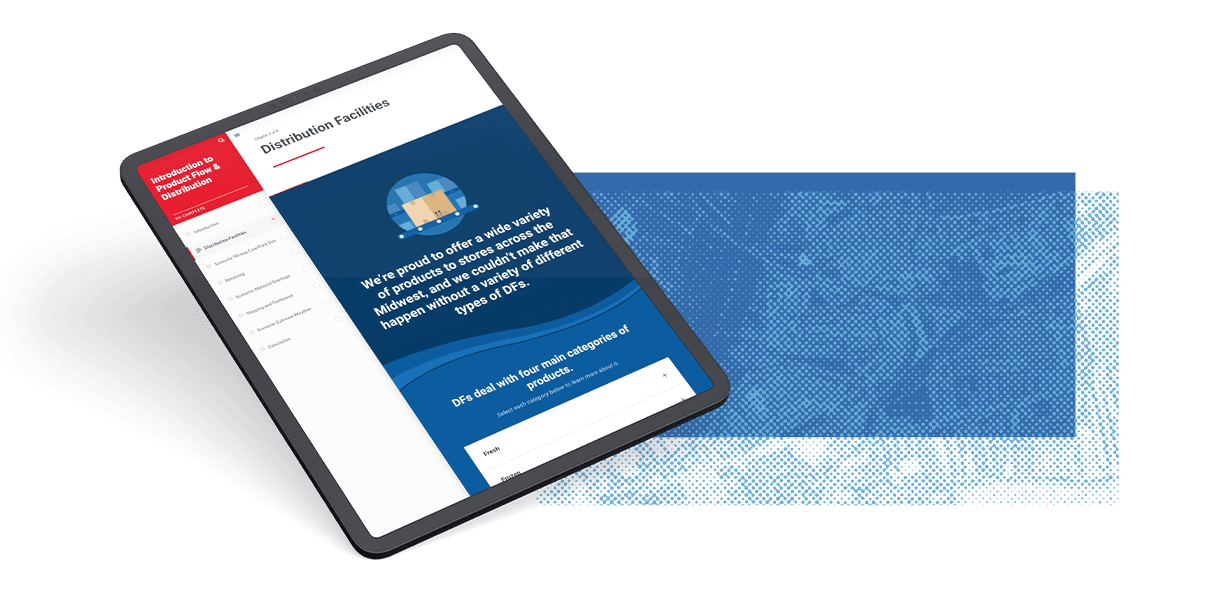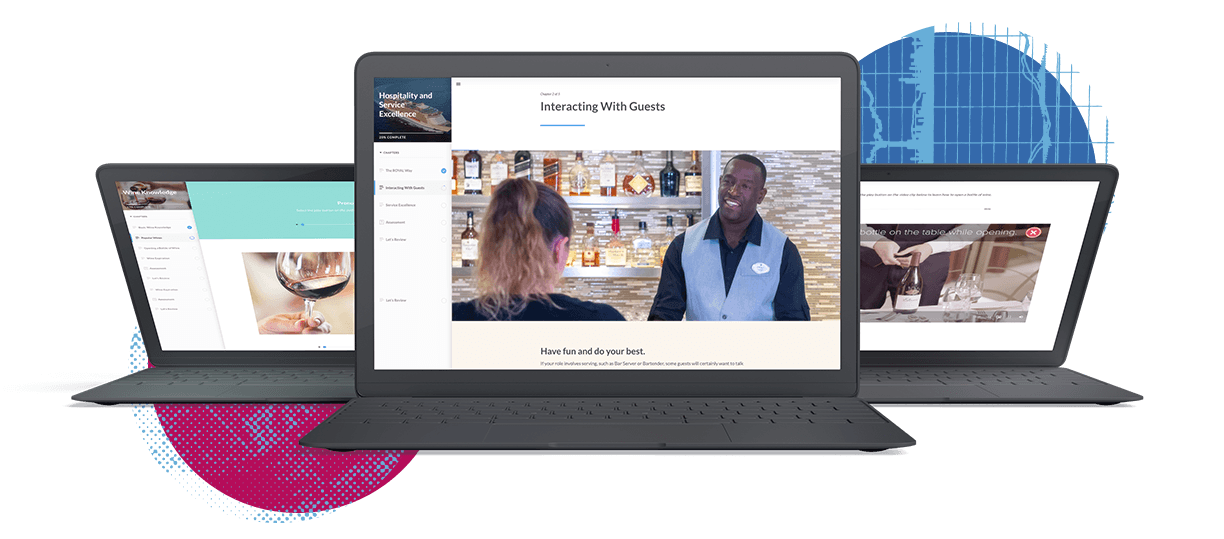It’s no secret that the coronavirus pandemic has become a catalyst for drastic changes in the way we work, communicate, and go about our daily lives; and many employers are scratching their heads wondering, “How can we possibly introduce coronavirus training on top of everything else?”
Although the pandemic has been going on for months, its impact is far from over for companies all over the world. One thing that’s clear? There will be a need to train employees on a new standard of cleanliness and hygiene in your organization. This especially rings true for those in the hospitality industry, and those with high-touch traffic—cruise lines, hotels, airlines, restaurants, grocery stores, gyms, schools, and many others.
How should you approach company coronavirus training that goes beyond checking a box? How can companies innovate and create training with high engagement and powerful outcomes?
Embrace digital coronavirus training for accessibility and interactivity
Pre-COVID-19, it may have been easier and less costly for an organization to train their staff in-person. In a pandemic, the only option is to go digital. Switching traditional in-person training, like ILT, to digital opens up more opportunities to create training that’s exciting for learners. Digital training makes it easier to feature accessibility, motion graphics, videos, and other interactive elements for your audience. All of these elements lend the training to be learner-centered, which translates to better learning outcomes (think: more retention) and a greater ROI in the long term. There are other options, too, when it comes to going digital — including webinars, elearning courses, or mixed media.
It’s not just ILT that can benefit from a digital upgrade. When we were approached by Celgene to create a digital compliance handbook, they had been relying on multiple pdfs that had to be constantly updated in order to deliver important policies to their employee base. This format for training isn’t uncommon, and because the content is static, it doesn’t offer much in terms of interactivity. By turning disorganized pdfs into a digital compliance handbook, we created a stronger resource that is searchable, more targeted, and available on-the-go to their employees. Content that was once static text became a series of dynamic videos accompanied by animated characters, engaging users and reinforcing what they learned.

Use videos for a learner-centric, highly visual approach
The stakes are high when it comes to preventing the spread of coronavirus — learning to use personal protective equipment and practicing safer hygiene aren’t processes you want employees to learn through trial and error. Here’s the challenge: creating a safe environment for learners to explore the impact of the choices they make without putting them or customers at risk.
Need help with a PPE policy? Use our course.
We worked hard to develop a simple and effective course on proper face mask and glove use based on CDC guidelines.
Learn more→We encountered a similar obstacle when we worked with a regional grocery chain to bridge better communication between their associate buyers, business analysts, and distribution centers. Seemingly simple office decisions were costing them, and we needed a way to show the difference between a good solution and a great one.
To help the employees see the impact of their choices, we filmed a live action video that took place in a corporate office, a distribution center, and a store. Learners were then presented with distribution issues to resolve, and each choice had a corresponding series of videos to reveal how the decision affected the company from centers to shelves.

These interactive videos followed a learner-centric approach by grabbing learner attention, evoking human emotion, and simplifying complex ideas. And with the addition of branching scenarios, employees could directly understand how their choices were costing others instead of having to learn in real-time. This type of risk-free, visual learning will be essential for coronavirus training as companies seek to keep workplaces and customers safe.
Go global and expand your reach with digital
For companies with branches worldwide, the task of providing training during the coronavirus pandemic may seem out of reach. But in the world of digital training, it’s never been easier to get your audience what they need — even on a global scale.
In our work with Royal Caribbean, we were tasked with creating dynamic, standardized onboarding training for 14 roles across their cruise lines. As a company that employs people from a variety of nationalities, ESL levels, and cultures, Royal Caribbean needed training that was designed to meet each learner in their own context so everyone could get the most out of their onboarding experience.
To accomplish this, we created detailed courses that used a combination of custom and stock photography, voiceover, and on-screen text to clearly communicate concepts specific to an individual’s role. By going digital for coronavirus training, diverse, global companies have the opportunity to create training that reaches their employees.

Use storytelling to get to the “why” behind coronavirus training
When training incorporates powerful storytelling, it releases potent neurochemicals in our brains, connecting us to characters and impacting us long after a story ends. There can be a lot of overwhelming, and sometimes hesitant, feelings when it comes to coronavirus policies and training. Companies need to prioritize helping their learners understand the “why” behind these policies to move past these feelings and onto creating something productive that will stick with their audience after training is done.
Johnson & Johnson had a similar challenge when they needed to introduce their 3D printing initiative to their employees. With a topic so technical, they wanted to humanize it and draw people in regardless of job role. Together, we asked the question, “What could be possible with 3D printing in the medical world?” and from there created a live action short that follows a man who has a terminal lung condition. First, viewers are shown the present outcome: a terminal diagnosis. Later, the tone changes when we see the possibility of the future: a doctor affirming that they will be able to bioprint new lung tissue to replace what’s damaged.
This video set the tone for the website that introduced J&J’s 3D Printing initiative, allowing every learner to start with an understanding of its value. Similarly, companies have the opportunity to lead with value with coronavirus training by asking the question: What’s possible if we do this well? How will these policies positively impact the world around us?
Learning is done best when approached creatively
Thinking creatively when it comes to learning is key to seeing results. We hope some of these examples inspire you as you approach company coronavirus training, helping to create safe environments for you, your employees, and the customers you serve.
